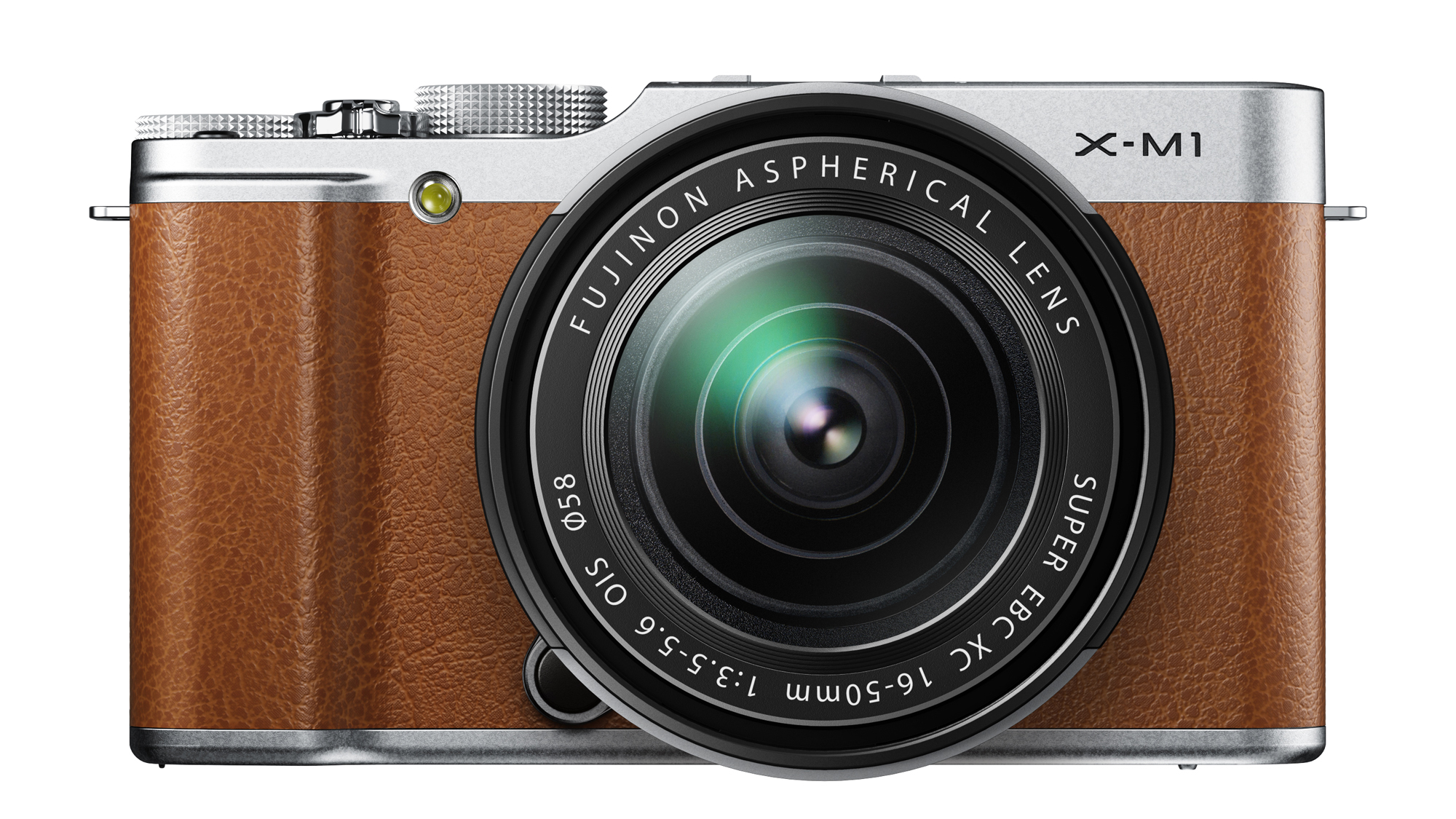TechRadar Verdict
If you're willing to part with a large chunk of change in return for something that looks beautiful, but still delivers in the image quality department, then you'll no doubt be pleased with the Fuji X-M1.
Pros
- +
Tilting screen
- +
Small size
- +
Large APS-C sensor
Cons
- -
Not a touchscreen
- -
Limited digital filters
- -
No viewfinder
Why you can trust TechRadar
Fuji's X-M1 is the third model in the company's X range of interchangeable lens cameras, and it is the smallest and lightest compact system camera the manufacturer has produced to date. In fact, it's a little smaller than the Fuji X20, which is a compact camera with a 2/3-inch sensor. The Fuji X-M1, however, has the same APS-C format sensor as the Fuji X-Pro1 and Fuji X-E1.
Consequently, the Fuji X-M1 has an X-trans CMOS sensor with 16.3 million effective pixels and Fuji's unique colour filter array that minimises moiré patterning and avoids the need for an optical low-pass filter - thus capturing more detail.
As with the X-Pro1 and X-E1, Fuji claims that the new camera is capable of matching a full-frame DSLR for image quality.

In a bid to save on cost and size, the Fujifilm X-M1 doesn't have a viewfinder built in, but it has a high resolution LCD screen mounted on a tilting bracket for easier viewing when shooting at high or low angles.
The new camera is the entry-level model for Fuji's X-series of interchangeable lens cameras, or compact system cameras, and it sits below the Fuji X-E1 and the flagship Fuji X-Pro1, priced at £679 / US$799 / AU$999 with a kit lens.
Features
Fuji has coupled the X-M1's sensor with its EXR Processor II (the Fuji X-Pro1 and Fuji X-E1 use the EXR Pro Processor) and this enables a start-up time of 0.5 seconds, shutter lag of 0.05 seconds and a maximum continuous burst speed of 5.6fps (frames per second) for a maximum of 30 images.
This processor also enables you to set sensitivity in the native range ISO 200-6400, with expansion options of ISO 100, ISO 12,800 and ISO 25,600 giving plenty of scope for shooting in low light as well as normal lighting conditions.
Sign up for breaking news, reviews, opinion, top tech deals, and more.

In a first for Fuji's X-series of compact system cameras, the Fuji X-M1 has a tilting LCD screen, which is designed to provide a clearer view when shooting from high or low angles. This is a high-resolution device with 920,000 dots.
Fuji has also included Wi-Fi technology for the first time in an X-series camera. This enables you to transfer images wirelessly to your smartphone or tablet using the free Fujifilm camera app, and from here images can be shared on social networking sites such as Facebook and Twitter.
Images can also be backed up to your home PC using the free Fujifilm PC autosave software, which enables you to select a folder to save photos to. Once the camera has been linked to your Wi-Fi router, we are told images can be backed up quickly and easily.

Images may be saved to the SD/SDHC/SDXC card as raw or JPEG files, or both simultaneously, and there are five film simulation modes to tailor the look of the JPEG images.
These modes may be used when shooting raw files as well, but the eight advanced filter options can only be used when shooting JPEGs. The film simulation modes include Provia (standard), Velvia (vivid), Astia (muted), Sepia and Black-and-White.
Meanwhile the advanced filters include Toy Camera, Miniature, Dynamic Tone, Pop Colour, Soft Focus, High Key, Low Key and Partial Colour. In addition, there is a multiple exposure mode that enables you to superimpose an overlay image of the previous shot.

Being a mirrorless camera, the Fuji X-M1 uses a contrast detection autofocusing system. As with the Fuji X-Pro1 and Fuji X-E1 the Fuji X-M1 has 49 individually selectable AF points. There's also a Multi AF option in which the camera selects the appropriate focus point, Tracking AF, Continuous AF and manual focus mode.
No camera would be complete today without the ability to record Full HD video, and the Fuji X-M1 can record 1920 x 1080 video at 30fps. For extra creativity, the film simulation modes are available for use when shooting video as well as stills.
Finally, in addition to a hotshoe for mounting a flashgun, there's also a small pop-up flash (Guide Number 7 at ISO 200), which is useful for providing extra illumination or fill-in light.

Amy has been writing about cameras, photography and associated tech since 2009. Amy was once part of the photography testing team for Future Publishing working across TechRadar, Digital Camera, PhotoPlus, N Photo and Photography Week. For her photography, she has won awards and has been exhibited. She often partakes in unusual projects - including one intense year where she used a different camera every single day. Amy is currently the Features Editor at Amateur Photographer magazine, and in her increasingly little spare time works across a number of high-profile publications including Wired, Stuff, Digital Camera World, Expert Reviews, and just a little off-tangent, PetsRadar.
